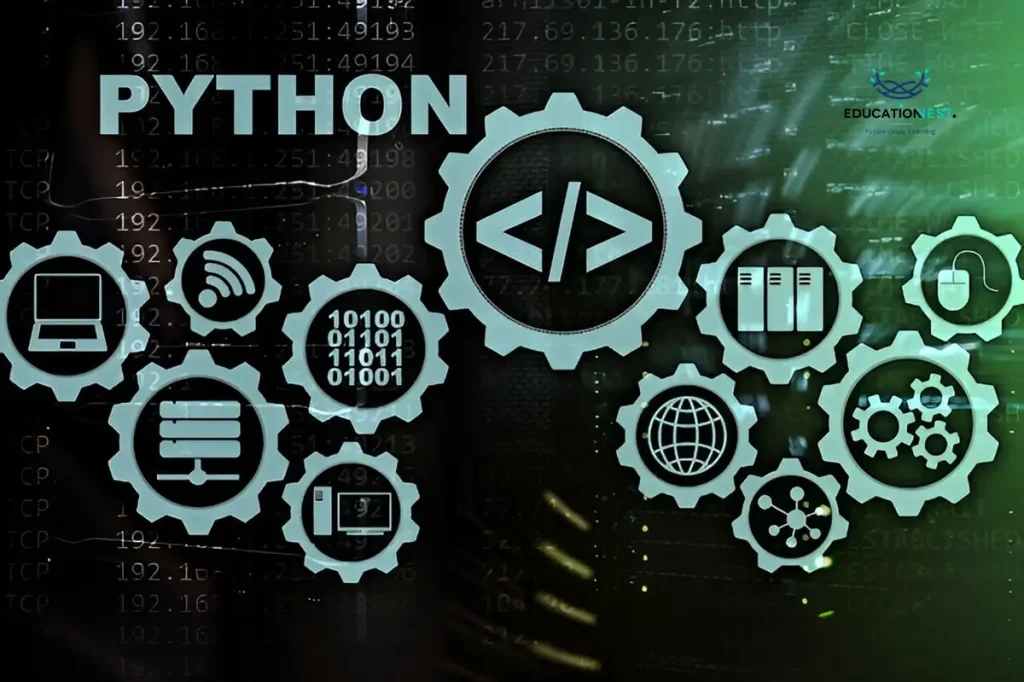Let’s admit it. After investing so much time and budget into building an app, we don’t just want it to run on one platform, do we? Any company will want to make the most of their investment! To do this, they need an app that will work as well on the web as on the mobile.
For this, Python is the best choice. It is a one-stop development solution. Using Python for web development is a smart choice for creating dynamic websites and applications. Thanks to its rich ecosystem, Python makes development simpler no matter the years of experience you have.
If you are new to web development or Python, this blog is for you. In this guide, we will tell you how to get started with Python for web development as a beginner and even walk through building a web app example.
Beginner’s Roadmap for Web Development with Python
If you have been googling, “Can Python be used for web development?” the answer is absolutely yes! Python lets you build web applications from the ground up while providing a lot of benefits that other languages do not. If you are ready to start web development with Python, here is the best roadmap for you:
Master the Basics of Python
Start by getting comfortable with the fundamentals of Python. You need to learn your way around syntax, data types, loops, conditionals, and functions. Building a solid foundation in Python will make web development much easier. Online tutorials, coding exercises, and beginner-friendly books are excellent starting points.
Understand HTML, CSS, and JavaScript
You will need to learn other languages too. These are HTML (for content structure), CSS (for styling), and JavaScript (for interactivity elements). Even in Python web development, a basic understanding of these languages is essential. These together are the backbone of any website’s front end.
Select a Web Framework
Choose a Python web framework based on your project’s needs. Django is known for its robustness and is ideal for larger projects with its “batteries-included” philosophy. Flask offers more flexibility. It is suited for smaller applications or APIs. Pyramid is another option with a flexible design. Explore each framework’s documentation and examples to find the right fit.
Develop Front-End Skills
You will need to learn popular front-end libraries and frameworks too. This will come in handy to improve user experience. The most popular ones are React, Vue.js, and Angular. These front-end Python tools hold the way to create dynamic, interactive interfaces that connect seamlessly with back-end APIs.
If you are looking for effective web development corporate training programs for employees, you are at the right place. EducationNest offers the most reliable, expert-designed courses for corporates in India that are also customizable to suit each team’s needs.
Create RESTful APIs
If your project includes an API, understand RESTful principles, such as how to structure endpoints and manage HTTP requests. Use your chosen Python framework to expose data and functionality to other applications or front-end components.
Implement Authentication and Authorization
Security is key to web applications. Understand the basics of user authentication (verifying users) and authorization (controlling user access). Most frameworks like Django and Flask have built-in libraries or extensions for secure registration, login, and access control.
Practice Testing and Debugging
Testing your code is vital for stable applications. Learn about unit testing, integration testing, and end-to-end testing. Python has powerful testing tools like pytest for unit tests and Selenium for end-to-end browser tests. Familiarize yourself with the Python testing frameworks available within your chosen framework.
Learn Deployment and Hosting
Understand how to deploy your web application. Learn about server configuration, deployment automation, and cloud hosting. Platforms like Heroku, AWS, and PythonAnywhere are popular platforms for hosting Python applications. Deployment knowledge will ensure your app is secure, scalable, and accessible online.

Read More
AI-Driven Assistance: How Microsoft Copilot Supports Project Management
The Future of Work: Exploring Microsoft Copilot’s Impact on Employee Productivity
Python Web Development Frameworks
Python offers a lot of web frameworks to meet diverse project needs. From small applications to large, high-traffic platforms, they can support various kinds of needs. Here are some of the most common ones and their strengths to help you get started:
Django
Django is a high-level framework known for its “batteries-included” approach. With tools for ORM, URL routing, form handling, and authentication, Django allows the rapid development of complex web applications. Following the MVC pattern, it is particularly suitable for larger applications where scalability and a comprehensive feature set are essential.
Flask
Flask is a lightweight and flexible micro-framework that offers all the core web functionalities. For starters, it offers URL routing, template rendering, request handling, etc. Designed for simplicity, Flask allows developers to pick extensions and libraries as needed.
Thus, it is the perfect Python web development framework for small to medium-sized projects where developers want more control over the app structure without additional built-in features.
Bottle
Bottle is a compact framework with a simple, single-file module structure. This framework is beginner-friendly and perfect for small projects, offering routing, template rendering, and HTTP request handling. With no external dependencies, Bottle is easy to deploy and distribute, ideal for learning or building quick, lightweight applications.
Pyramid
Pyramid is a scalable, minimalist Python framework for web development that comes with flexible options for templating engines, URL dispatching, and authentication tools. Pyramid is suited to projects of any size and allows developers to choose only the components they need, making it powerful for both small apps and large enterprise systems.
CherryPy
CherryPy is a minimalist, intuitive framework known for its stability and performance. It can handle HTTP requests, URL routing, and session management. It can also operate as a standalone HTTP server and even integrate with others. CherryPy is well-suited to building small to medium-sized applications and APIs. It offers developers a balance between simplicity and capability.
Tornado
Tornado is a powerful Python web development framework focused on real-time functionality. It is designed to handle high-traffic applications with non-blocking I/O operations. It is best for apps that need thousands of simultaneous connections (like chat servers or streaming platforms). If you are making a high-performing, real-time app, this is for you.
Conclusion
This is the simplest roadmap you need to get started with Python for web development. Even if you are a beginner, Python is easy to follow. Python is one of the top choices for web development. Its simple, readable syntax is a blessing for developers.
But even more so because it brings a lot of interesting frameworks with unique advantages suited for different projects. Whether you are building a small-scale app or a large, high-performance system, Python has a framework to help bring your vision to life.
Web development will always be booming because companies will never stop needing functional, interactive websites. Hence, if you are looking to train your own in-house team of web developers, you are at the right place. EducationNest, India’s biggest corporate training provider offers the most reliable, expert-designed courses in this domain which are also customizable.
